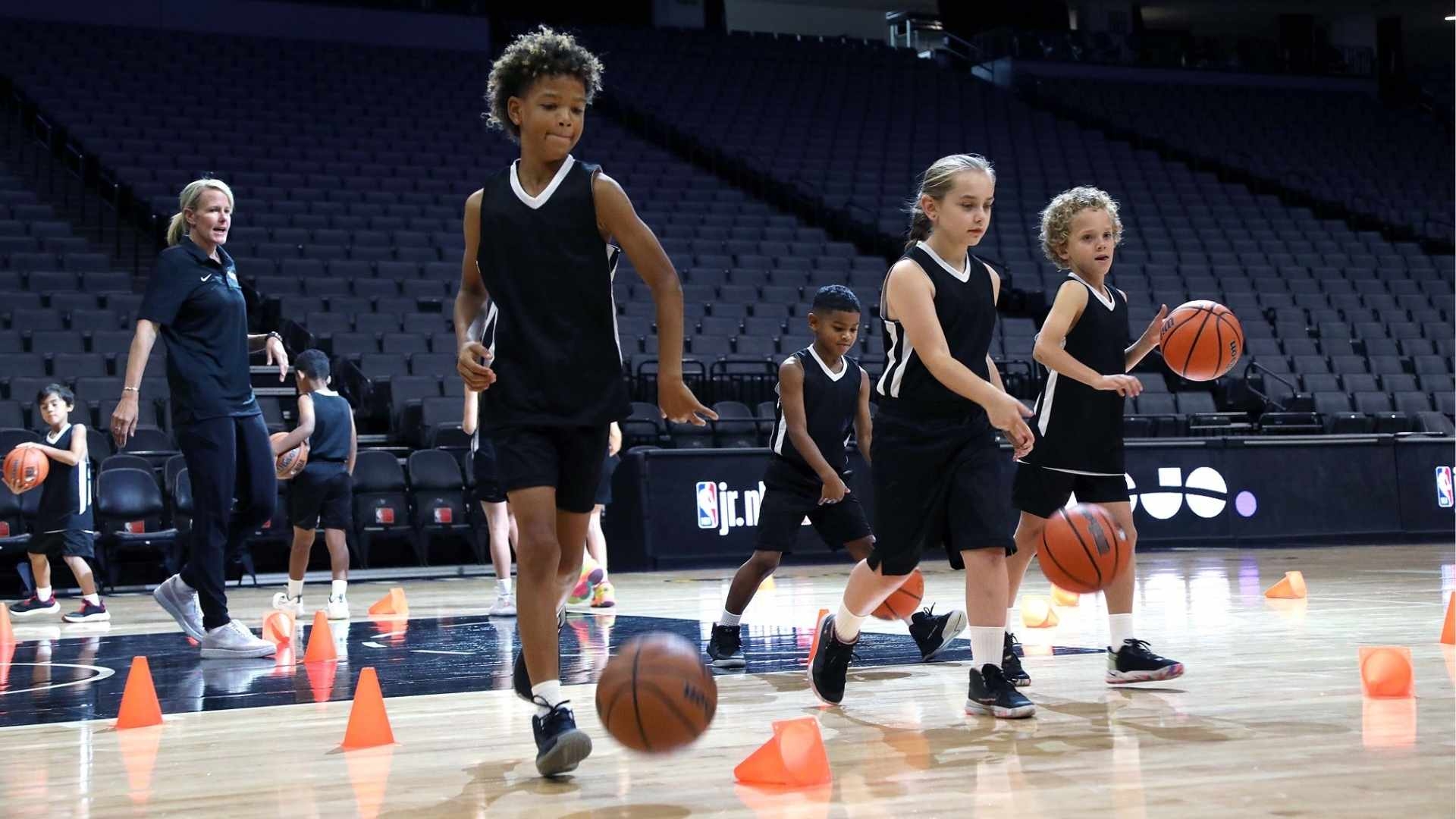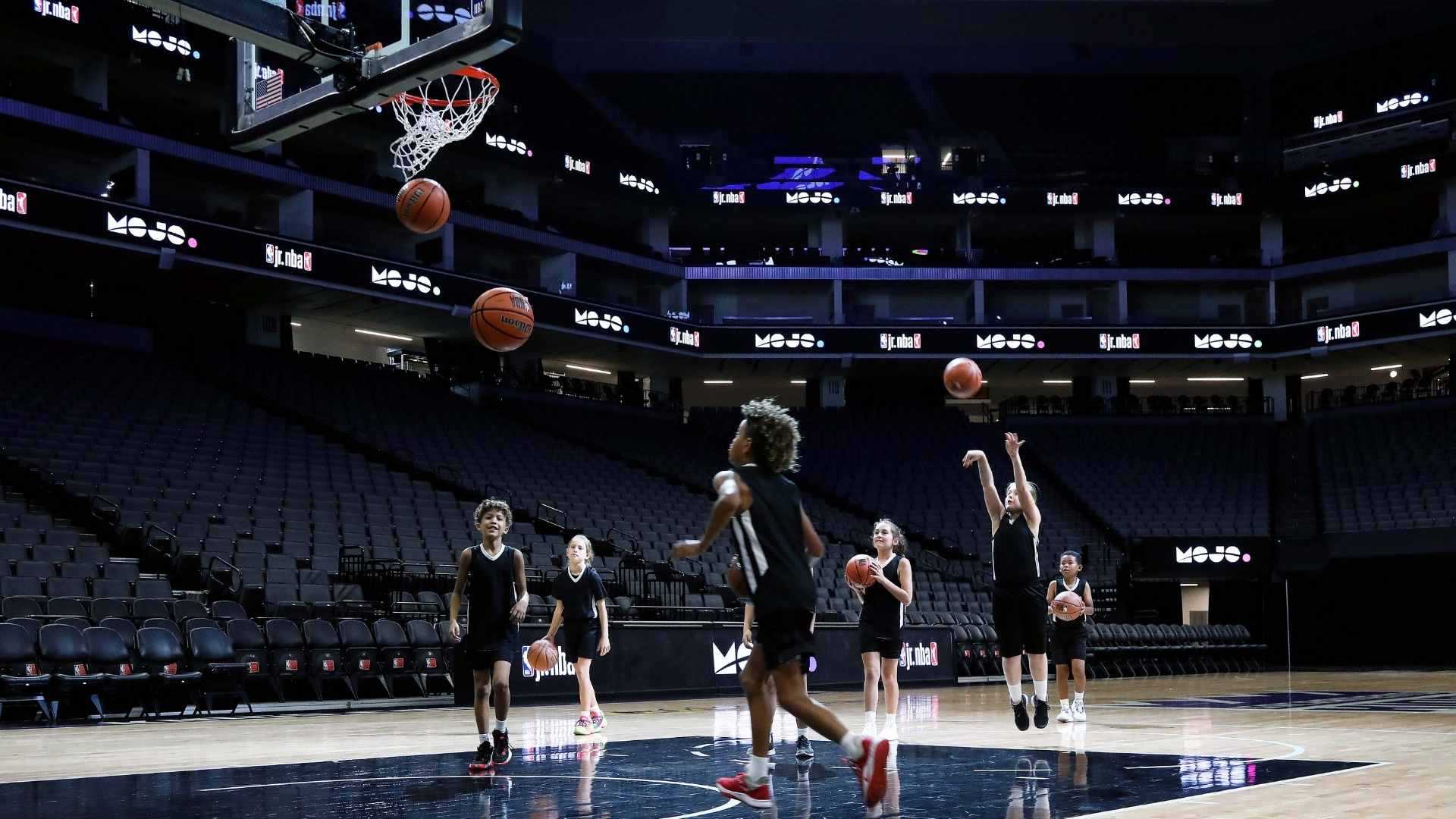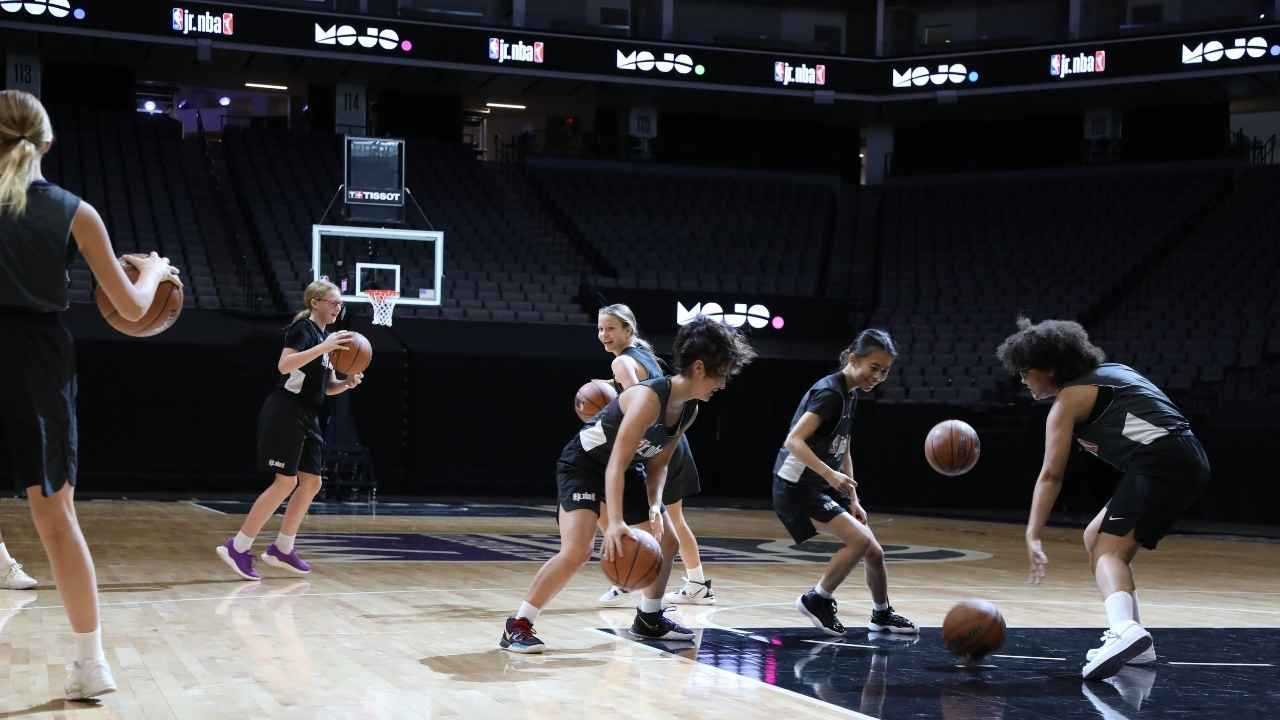Why Basketball Ball Size Matters
Not just any size basketball will do—especially for developing players
Laura Lambert
| 4 min read

A basketball is a basketball is a basketball … unless you’re a 5-year-old kid who can barely lift 1.5 lbs over your head.
The truth is, in gyms and on outdoor courts across the country, most kids are playing with the wrong size basketball. And 10-year-old girls shouldn’t really be using the same size ball as their WNBA icons, says Darren Anderson, founder of Forward Pivot and a consultant to FIBA, the International Basketball Federation. He brings an international perspective to the issue of basketball size — and he says that many youth competitions in the U.S. still use a ball that is one size too big and heavy.
What’s developmentally appropriate?
In the United States, the “official” ball size for men’s high school, college and professional teams is a size 7. That’s a ball that’s 29.5” in circumference, weighing in at about 22 ounces (just under 1.5 lbs) — and it has no business being on most youth basketball courts.
Professional, college and high school women play with a size 6, which is an inch smaller in circumference, and two ounces lighter. It’s a small difference, if you’re just thinking about numbers, but the size and weight can make a big difference when it comes to ball-handling and shooting. Size 6 is an appropriate size for older kids — age 12 and up — given their smaller hands and (generally-speaking) stature.
But for boys and girls just learning the game, you’ve got to go even lower.
Size 3 balls — known as a mini — are 12 inches in circumference and weigh just 10 ounces. Kids ages 4 to 7 can easily handle this size and build basic skills with proper technique.
Size 4 balls are appropriate for boys and girls ages 5 through 8 or 9. The balls are 25.5 inches in circumference and, at 14 ounces, are far easier for kids to maneuver and handle than bigger balls. Anderson says he sees increasingly more progressive youth basketball leagues use size 4 balls for U10 competitions, particularly when rims are unable to be lowered.
Size 5 balls are slightly larger — 27.5 inches in circumference, or a bit larger — and weigh up to a pound. This is the sweet spot for most youth basketball players, aged 9 to 11 years old, and, says Anderson, the go-to size for U12 competition (which still commonly use a size 6 ball).
The benefits of using a right-sized basketball
The primary drawback to using a too-big ball is that technique suffers — players rely too much on their shoulders and chuck or fling the ball instead of using proper shooting stance, for instance. Those habits are hard to break as kids grow and develop as players.
But it’s not just about bad technique.
Anderson outlines the benefits of downsizing the basketball for younger athletes, which happen to make the game more fun for everyone.
- A greater ability to replicate the skills of their heroes
- The opportunity for more advanced skills — like 3-point shooting, one-hand passing, faster transitions — which cannot be taught to junior players using an oversized ball
- Improved ability to beat zone and pressure defenses
- Game scores that are more like their idols (instead of, say, 4-0)
- Keeping late-maturing kids in the sport longer
The right ball, right now
Right-sizing the basketball, then, gives kids a better chance at success — hitting shots, honing technique, feeling like ballers instead of kids running around in too-big shoes. And in community gyms that don’t have the luxury of lowering rims to 6-8 feet, downsizing the ball is the easiest way to get younger players scoring buckets right away. So what if the ball looks a little different from what you usually see on the court? That’s exactly the point.
For more about right-sizing youth basketball, be sure to check out the Youth Basketball Guidelines from the NBA and USA Basketball.




